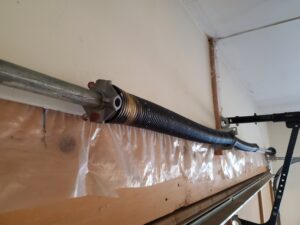Garage doors spring replacement, often overlooked, are integral to home security. Their operation relies heavily on a complex spring system that carries the load and ensures smooth movement. These robust springs, however, endure wear and tear over time or improper use, resulting in various issues.
Failure to address these problems promptly can lead to reduced efficiency and safety risks. To mitigate these risks, it’s essential to recognize common garage door spring problems and their solutions. This article identifies these issues and provides practical advice for resolving them. It aims to empower homeowners with comprehensive knowledge about garage door mechanics, fostering a sense of community among readers facing similar challenges.

Recognizing Common Spring-Related Problems
Observation reveals that recurring garage door spring replacement issues often manifest as strain on the door’s mechanical components. This strain leads to irregular movement, unusual noises, or complete failure to function.
The complexity of these components means they can wear out faster than expected when subjected to frequent use and temperature changes.
Another issue arises from misalignment, often due to gravitational forces on the door over time. These malfunctions affect not only the door’s smooth operation but also pose safety risks if neglected.
There are two types of garage door springs: torsion and extension springs.
Torsion springs store potential energy by twisting, offloading the door’s weight onto a metal shaft above the garage entrance.
Extension springs extend and contract with the door’s movement using pulleys.
Signs of torsion spring issues include a sudden drop or slow rise when manually operating the garage door without motor assistance.
For extension springs, faulty ones may cause uneven opening or jamming during automatic operations.
Recognizing these signs early enables homeowners to seek professional help before small issues escalate into significant problems, potentially causing property damage or life-threatening incidents due to sudden failures.
Regular checks for rust, unusual noises, or misalignment should be part of routine maintenance for the long-term functioning of these essential components.
Practical Solutions for Spring-Related Problems
Solving spring-related problems involves a range of methods, from simple adjustments to complete replacement.
For minor issues like loose or squeaky springs, tightening the spring’s tension using adjustment screws can help. However, caution is necessary due to the high tension in these components.
Lubricating garage door springs can mitigate squeaking or grinding noises during operation. High-quality silicon-based lubricants are recommended for optimal results.
In cases of extensive wear or damage, such as visible gaps or irregular shapes, spring replacement is necessary. It’s advisable to seek professional assistance due to the complexity and risks involved in handling torsion springs. These springs are under significant pressure and require specialized tools and skills for safe removal and installation.
When considering maintenance for garage door springs, prevention is key. Regular inspection schedules should be established to detect early signs of wear or misalignment. This proactive approach extends the door’s lifespan and provides peace of mind, knowing potential issues are addressed promptly and efficiently.

